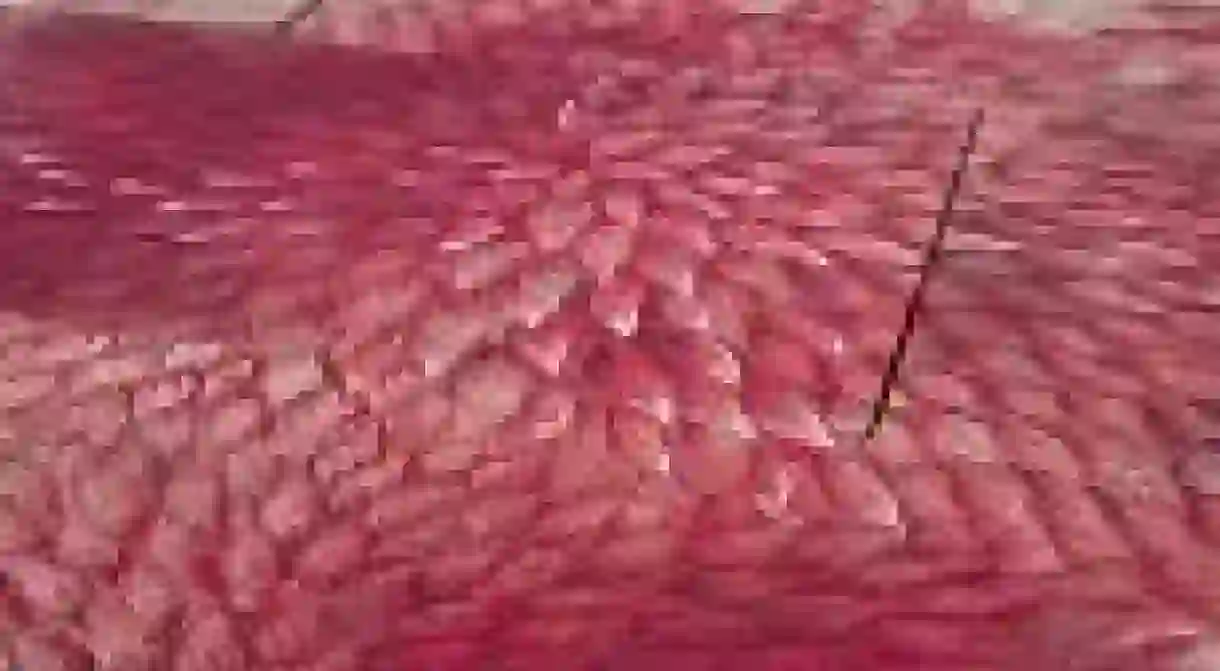Imran Qureshi | Pakistan's Top Miniature Painter

Pakistani artist Imran Qureshi created an immense piece of art on the rooftop of New York’s Metropolitan Museums as part of their Roof Garden Commission, a large scale installation entitled And How Many Rains Must Fall Before The Stains Are Washed Clean, which evokes Cy Twombly, Mughal Miniature Art and the violence which pervades Pakistani society.

Imran Qureshi’s commissioned piece on the rooftop of the Metropolitan Museum, New York, is an outrageous sight at first glance. The work reminds one of the aftermath of a brutal attack. Vile blood stains cover a large portion of the eight thousand square foot terrace. But from this effectively realistic splattering of red acrylic paint that is evocative of the frequent violence in his country Pakistan, and increasing episodes of violence all over the world, Qureshi creates his regenerative art. Blotches of scarlet paint, random and askew are converted with meticulous brush strokes of white paint into flowers, foliage, and nature creeping and burgeoning all over Qureshi’s piece. Using the painstaking precision of Mughal miniature painting from the 16th and 17th centuries that is a mainstay of the artistic legacy of Pakistani art, Qureshi transforms an unpleasant sight into something pleasurable and aesthetically appealing. In the vein of Cy Twombly’s Bacchus series, which is characterised by violent compilations of thrown paint from which one sees bloody dripping flowers, Qureshi’s vast depiction of foliage is no less appealing. Working towards an emphatic painterly style, the large scale work is particularly effective in the way it both shocks the viewer as well as commands a presence in its redeeming quality. The viewer has to withstand its brutal scale the effect of which is simultaneously grand and violent, much like Twombly’s paintings. For Qureshi the quantum leap from miniature painting is its alteration in scale. He deviates from historical miniature paintings’ focus on scale wherein the highly elaborate rendering of figures, flora, fauna, ornaments and architecture are to be marvelled at because of the miniature format.

At the Metropolitan Museum the work was made specifically for the space, and he deftly commingles the rough unseemliness of thrown paint with the evenness of his painterly technique, which has an arresting physicality to it. Exhilarating creativity, growth and destruction mark Qureshi’s art. A sense of freedom from the randomness of flinging paint emanates from his work. Once the paint is splattered it seems too wild to be tamed or even mastered. Yet flowers emerge and radiate from these spaces as the viewer enjoys the color of the paint and the process of its creation. Thick, dense portions are made into a progression of flowers that are pretty, delicate and soothing. Some are akin to the multiple layers of dahlias and sunflowers while other fiery red splotches never depart from the viewer’s initial shock of encountering the work. It begs the question of whether certain parts are unfinished. However, it is interesting to see how the artist lets his painting speak to the viewer. In some places he intervenes with soft recurring shapes and forms that transport the viewer’s response to rebirth and regeneration, while others remind us of brutal political realities.

Yet critics question the effectiveness of Qureshi’s art. Unlike the impact of a similar site-specific work at the Sharjah Biennale in 2011, the horror of daily violence might be lost on the viewer in New York. But it still does not detract from the contemporaneousness and relevance to what is going on around us. Having won the 2013 Deutche Bank Award for artist of the year, and a substantial presence at the 2013 Venice Biennale, Qureshi, like many other artists from South Asia, has found his moment in the sun. But more specifically, Qureshi’s work is characterised by a language that is no longer derivative or second to any other tradition. While his act of throwing paint follows in the convention of Jackson Pollock’s gestural painting, he uses a Western format with his own indigenous sensibility to communicate what is clearly very important to him. If authenticity – the age old benchmark of good art – is applied to his work, there is no doubt that Qureshi’s art is reflective of a deep passion, talent and certitude in his need to communicate a pressing message for hope and change. Ultimately, if his work is about anything it is about painting, and what it means to put marks on a surface – in this case on the raw concrete slabs of the terrace – and how space is framed and shown. Imran Qureshi’s work will be on display in The Roof Garden Commission from 14 May to 3 November, 2013. Please visit The Metropolitan Museum of Art’s website for more information. By Bansie Vasvani Bansie Vasvani is an independent art critic and writer. She lives in New York City.
The Culture Trip showcases the best of art, culture and travel for every country in the world. Have a look at our Pakistani or Asia sections to find out more or become involved.













